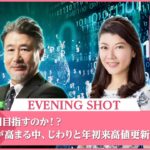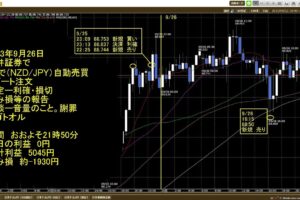Given the challenges facing China and the strength of the US economy, it is not surprising that the greenback is appreciated in the Asia-Pacific region.
The bullish momentum of the greenback may be further fueled by expectations that US interest rates are likely to remain at 20-year highs. The US dollar ended Friday’s Asian session inching down within the range of 104.8-105.1.
However, it is on the verge of its longest weekly winning streak since 2014. In yesterday’s US session, the world’s main currency rose to 105.16. Notably, this was the highest level since the collapse of Silicon Valley Bank in March this year.
The strengthening of the greenback has not only pushed the Chinese yuan exchange rate down to a 16-year low but has also forced Japanese policymakers to act and step up measures to save the national currency.
The verbal interventions by Deputy Finance Minister Masato Kanda and Bank of Japan official Hajime Takata have so far had little effect. On Wednesday, the former said that the authorities were not ruling out any option to curb speculative moves in the market. The latter warned that the government was closely monitoring the situation.
While the market does not expect the Bank of Japan to intervene in the currency markets until the yen reaches the October high of 151.95, a move above 152 cannot be ruled out.
On Friday, the dollar/yen pair was trading within the range of 146.5-147.5. The Japanese currency hit its lowest level against the greenback in more than three decades. During the Asian session, the yen continued to weaken after a slight dip and climbed to 147.4.
However, the main driver of the yen’s decline was the updated reports on Japan’s GDP growth rate. The reports showed growth of 1.2% in the second quarter of 2023 and downgraded the figure to 0.8% in the first quarter of 2023. Compared to forecasts of a 1.5% increase, these data not only disappointed investors but also highlighted the fragile state of the country’s economy.
Furthermore, the reports confirmed that the Bank of Japan would continue to maintain its ultra-loose monetary policy. As a result, the yen lost its safe-haven appeal and weakened against its counterparts.
The Australian dollar also sagged on the back of a weak China and a strengthening the greenback. As a result, the aussie/dollar pair lost more than 1% during the week, trading below 0.63900.
Soaring oil prices should have pushed commodity currencies higher. However, the decline in demand in Europe and China hampered their rally.
Against this backdrop, the Australian dollar showed high volatility on Friday. The currency closed the Asian trading session higher within the range of 0.6370-0.6415.
The New Zealand dollar followed its Australian counterpart today. The kiwi managed to settle in the range of 0.5871-0.5915, ending the Asian session at 0.59.
00:00 Intro
00:33 The US statistics
01:17Apple
01:59 China
02:59 USDX
03:59 USD/JPY
05:16 JAPAN’S GROSS DOMESTIC PRODUCT
06:03 AUD/USD
06:47 NZD/USD
FX Analytics –
Forex Calendar –
Forex TV from InstaForex –
Forex charts –
Instant account opening –
Forex Trading Contests –
List of official InstaForex blogs:
#forex_news # asian_session #instaforex_tv











コメントを残す